|
|
Bernard Sleigh. An Ancient Mappe of Fairyland, Newly Discovered and Set Forth. 1918
Detail from An Ancient Mappe of Fairyland, Newly Discovered and Set Forth. "Here is Mermaides Rock where they doe singe"
Writing on British fairy literature during the 1920s and ‘30s in the journal Mythlore for 2013, author Douglas Anderson teased his audience:
“I’d like to turn to the author I find most interesting from this period. He grew up in the Birmingham area of England and was indelibly inspired after seeing Peter Pan performed on stage. He was devoted to William Morris and George MacDonald. He went on to write about fairies, in poems and in stories, illustrating his own writings with his own artwork. He was particularly renowned for his maps… Though the above could all be said of J.R.R. Tolkien, I’m actually talking about someone else, named Bernard Sleigh.”*
____________
* Douglas A. Anderson, ‘Fairy elements in British literary writings in the decade following the Cottingley fairy photographs episode,’ Mythlore 32.1, Fall/Winter 2013.
Bernard Sleigh (1872–1954) was an English mural painter, stained-glass artist, illustrator and wood engraver, best known for his An Ancient Mappe of Fairyland, Newly Discovered and Set Forth, which depicts numerous characters from legends and fairytales. He was a member of the Royal Birmingham Society of Artists between 1923 and 1928. Sleigh was a founder of the Fairy Investigation Society (with Q. C. A. Craufurd and others) in 1927.
Sleigh wrote in 1926 a series of stories about fairies, The Gates of Horn.* Douglas A. Anderson describes the stories in The Gates of Horn as "engaging and well-told".
____________
* Sleigh, Bernard. The Gates of Horn; Being Sundry Records From the Proceedings of the Society for the Investigation of Faery Fact & Fallacy. Selected and Edited by Bernard Sleigh. Illustrated With an Original Woodcut Engraved by Him (Aldine House, London 1926).
An Ancient Mappe of Fairyland : Newly discovered and set forth. Designed by Bernard Sleigh. Printed by W.Griggs & Sons, Ltd. Peckham, London, S.E. Published by Sidgwick & Jackson, Ltd. London, W.C. 1918
An Ancient Mappe of Fairyland : Newly discovered and set forth. 36×144 cm. Source: loc.gov. [jpg, 17861×5484 px]
Three sheet pictorial birds-eye view style panorama fantasy map of Fairyland, a fictive place. With 16 pages text, 18.5×12.5 with illustrations. Designed by Bernard Sleigh at the end of the Great War. The ancient map of Fairyland is said to have been his most famous work. The map was designed during the "Arts & Crafts" movement, which was in reaction to the Industrial revolution. The map shows a fantasy world, displaying European fairy tales, literature, and Greek mythology. One can travel from King Arthur's Tomb to Peter Pan's House to the 'Bay of Moaning,' or the visit the roost of Dragons, watch Perseus save Andromeda, chat with Hercules, or visit the 'Harbour of Dreamland.' A red line indicates the route of passage 'From the World' to 'a place that never was and always will be, complete with nixies, fairies, watersprites, Cinderella's castle, the location of Excaliber, and Avalon. Relief shown pictorially. Depth shown by soundings. A second, smaller single sheet edition was published around 1920.

An Ancient Mappe of Fairyland : Newly discovered and set forth. 43×177 cm. Source: loc.gov. [jpg, 22024×6343 px]
An Ancient Mappe of Fairyland : Newly discovered and set forth. 47×178 cm. Source: davidrumsey.com. [jpg, 36640×10992 px]
BRITISHFAIRIESBernard Sleigh and the map of fairyland
Sleigh was especially skilled in wood engraving and soon found commissions illustrating books. One of his first major projects was engraving one hundred of Gaskin’s illustrations for a two-volume edition of Hans Christian Andersen’s Stories and Fairy Tales. Sleigh was also published in The Yellow Book, The Dome and The Studio and illustrated Piers Plowman, several novels by Morris, George Macdonald’s Phantastes, Legrand d’Aussy’s Fabliaux and an edition of the romance of Tristan and Iseult, all titles suited to his style and tastes.
Sleigh is celebrated today not for his handicraft design but for the Ancient Mappe of Fairyland. This is not, in fact, unfitting. As a young man, Sleigh was greatly inspired by the mythical writings of MacDonald and Morris and the map clearly reflects their influence. Indeed, by the time he retired in 1937, Sleigh’s imagery had turned from romantic medievalism entirely to a world peopled by supernatural beings. His writing, too, changed from the practical to the mythological, for example Witchcraft (1934), The dryad’s child (1936) and two fantasies for children, The boy in the ivy (1955) and The tailor’s friends (1956).
Detail from An Ancient Mappe of Fairyland, Newly Discovered and Set Forth
The map’s immediate success encouraged Sleigh to produce further fairy works. In October 1920 he published The faery calendar, in which illustrations for each month of the year were paired with a piece of prose or verse. In his Preface Sleigh confessed: “I believe in Faeries. It is very natural and not a bit foolish; for in these days we are quickly learning how little we know of any other world than our own. It is no more difficult for me to believe that a wild rose, or a daisy, has personality, consciousness of life—a spirit, in short, than that a human being has.”
Sleigh’s next book, A faerie pageant, appeared in 1924; it was a limited-edition volume resembling the Calendar. Lastly, in 1926 Sleigh wrote a volume of stories about fairies, The Gates of Horn: Being Sundry Records from the Proceedings of the Society for the Investigation of Fairy Fact and Fallacy. Although intended for adults, his publishers J. M. Dent marketed it as a children’s book, resulting in its commercial failure. This makes copies extremely rare today, although the stories are highly regarded by those fortunate enough to have been able to read them. As a footnote to this, we should note that in 1927 Sleigh was instrumental in establishing a real Fairy Investigation Society, which still operates online today.
Sleigh’s daughter, the writer Barbara, recalled in her childhood memoir that: “One wet holiday my father drew a Map of Faeryland for us. On it were marked the sites of all our best-loved fairy-stories. There is Peter Pan’s House, and the palace of La Belle Dormante and the Bridge of Roc’s Eggs, and such succinct entries as ‘Here be bogles’ and ‘Warlocks live here’. It has fascinated several generations of children.” (The smell of privet, 1971, pp.51–52.)
Bernard Sleigh's first draft of the Anciente Mappe of Fairyland, drawn 25 March 1909. Source: archive.org
The Ancient Mappe of Fairyland was first published in December 1917 as a full colour scroll with wood ends, rolling out to nearly a metre and a half in width and thirty-five centimetres in height. With it Sleigh produced a small sixteen-page pamphlet, A guide to the Map of Fairyland. In 1926, because the map had continued to be a good seller, the publishers Sidgwick and Jackson issued a second companion volume: Travels in fairyland is an anthology of the nursery rhymes, stories and poems mentioned on the map or listed at the end of the Guide.
The map is hand-drawn and seems to be a combination of coloured pencil and watercolour wash. It is somewhat reminiscent of Tolkien’s illustrations of The Hobbit—but plainly rather more accomplished. Less highly finished than many of Sleigh’s full-colour illustrations, there is a childlike or playful quality to the draftsmanship which is part of its appeal.
A guide to the map of Fairyland. Designed & written by Bernard Sleigh. London: Sidgwick & Jackson 1918. (to accompany) An Ancient Mappe of Fairyland : Newly discovered and set forth
A guide to the map of Fairyland. Designed & written by Bernard Sleigh. London: Sidgwick & Jackson 1918. Source: loc.gov
A guide to the map of Fairyland. Designed & written by Bernard Sleigh. London: Sidgwick & Jackson 1918. Source: davidrumsey.com. [jpg, 21451×9174 px]
A guide to the map of Fairyland. Designed & written by Bernard Sleigh. London: Sidgwick & Jackson 1918.
After Sleigh retired from teaching in 1937, the map was turned into a Rosebank Fabric by the well-known Lancashire company. This, in turn, led to many other commissions for textile designs, thereby providing a source of income over and above his meagre teaching pension.
A map of Fairyland by Bernard Sleigh. Cloth map. "A Rosebank fabric". England, 1920
A map of Fairyland by Bernard Sleigh. "A Rosebank fabric". England, 1920. Source: loc.gov. [jpg, 15062×7177 px]
Detail from A map of Fairyland by Bernard Sleigh. "A Rosebank fabric". England, 1920
4 апреля 2020, 21:21
0 комментариев
|
Партнёры
|





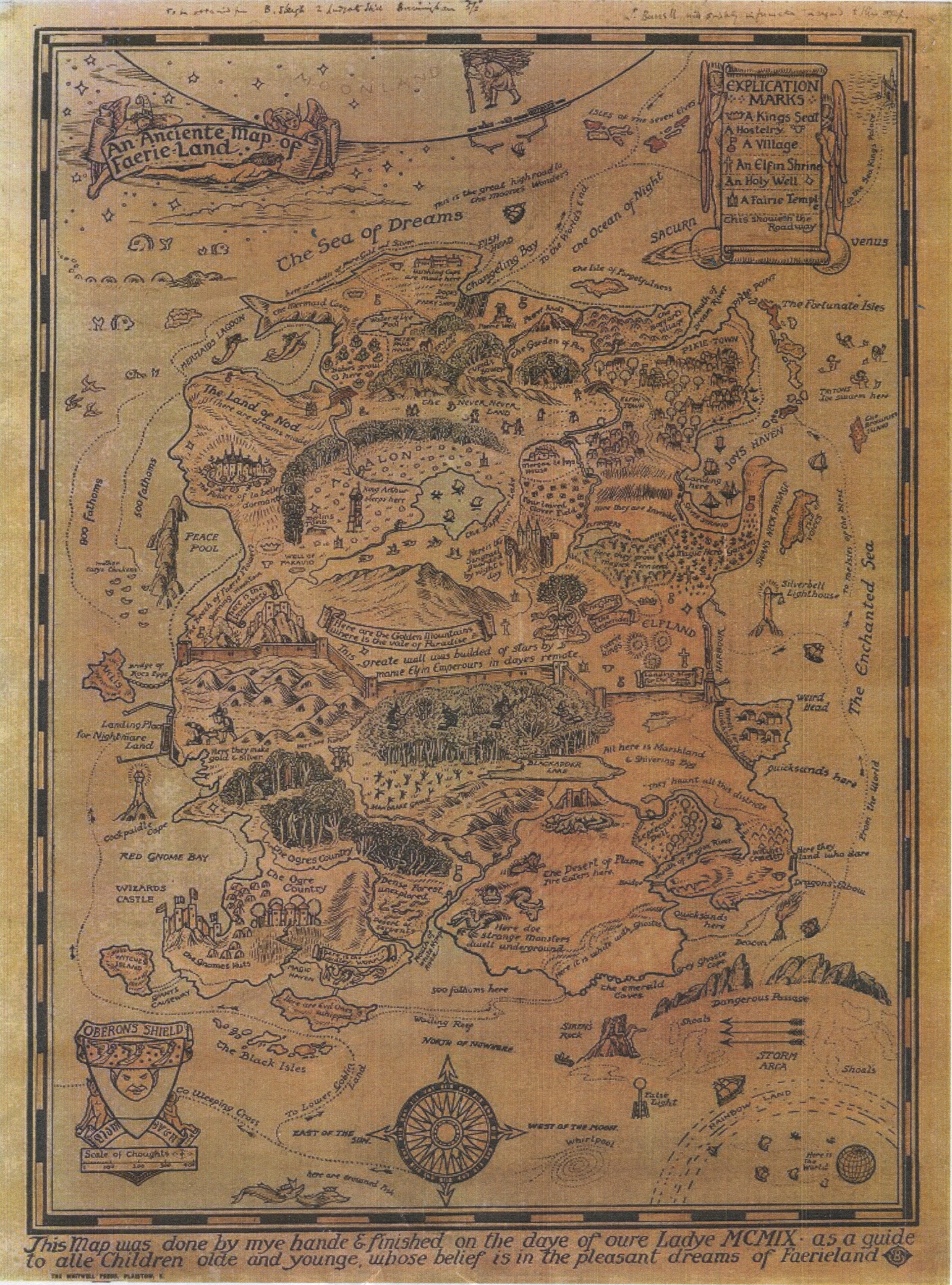
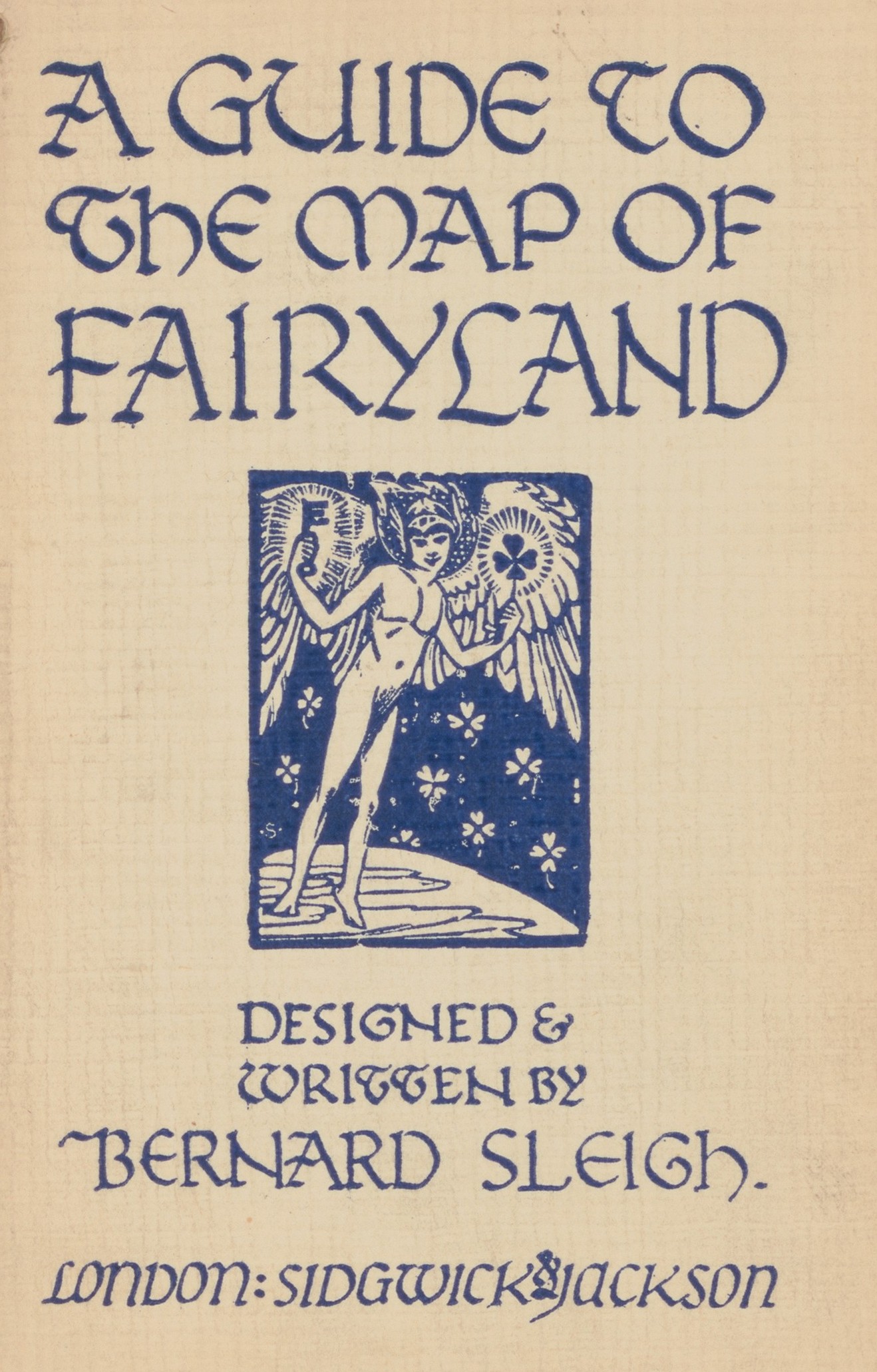
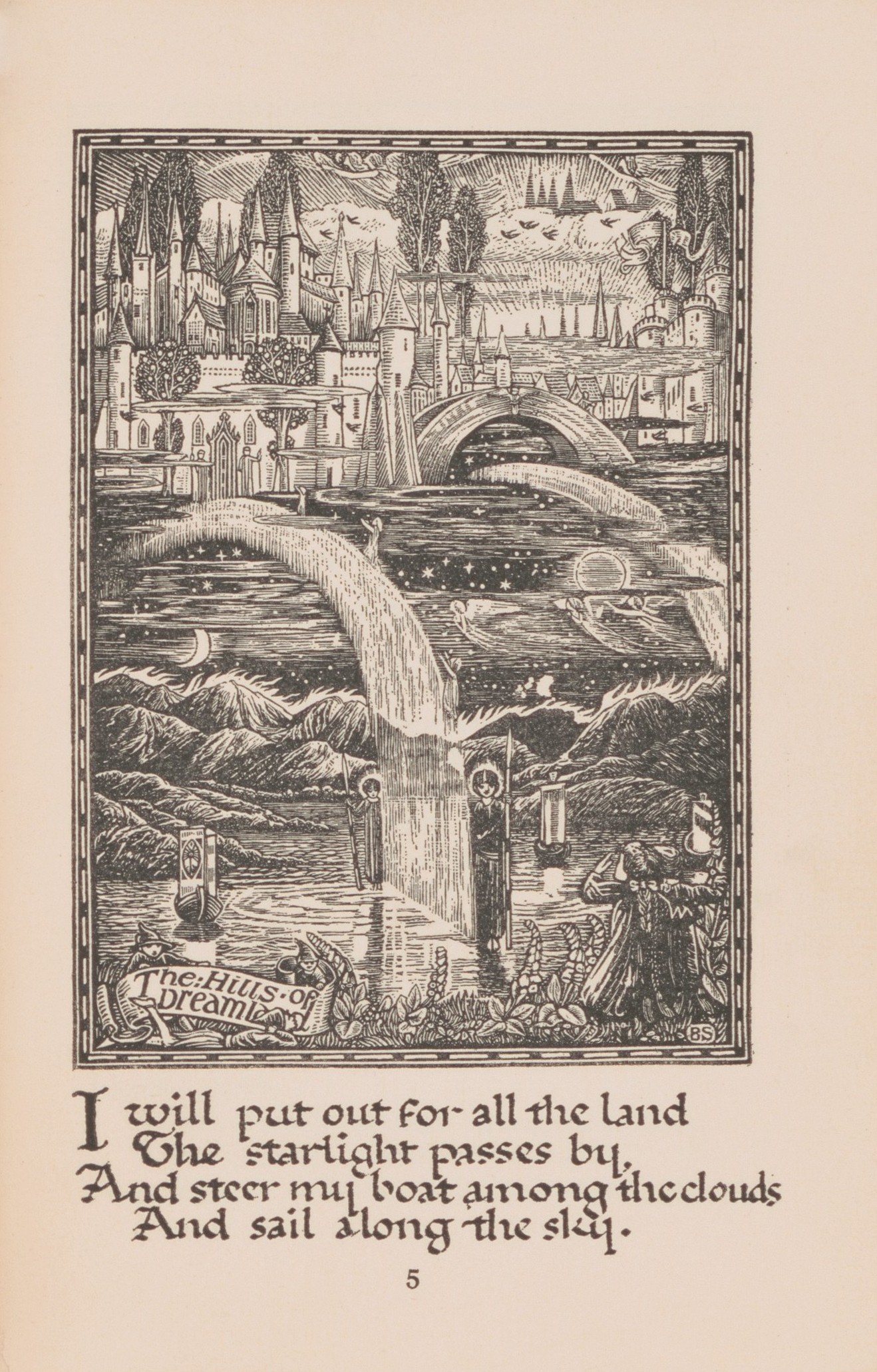
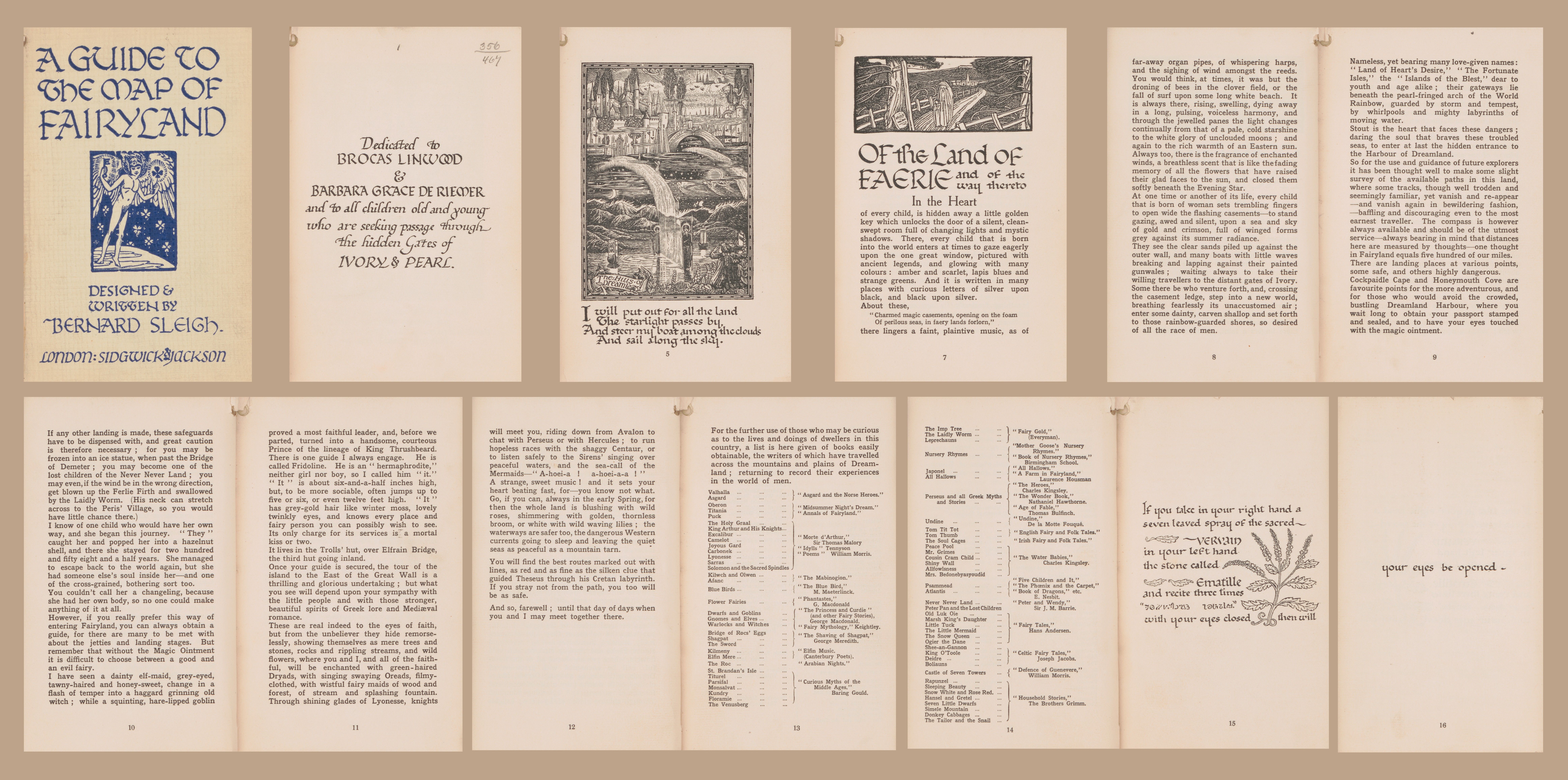
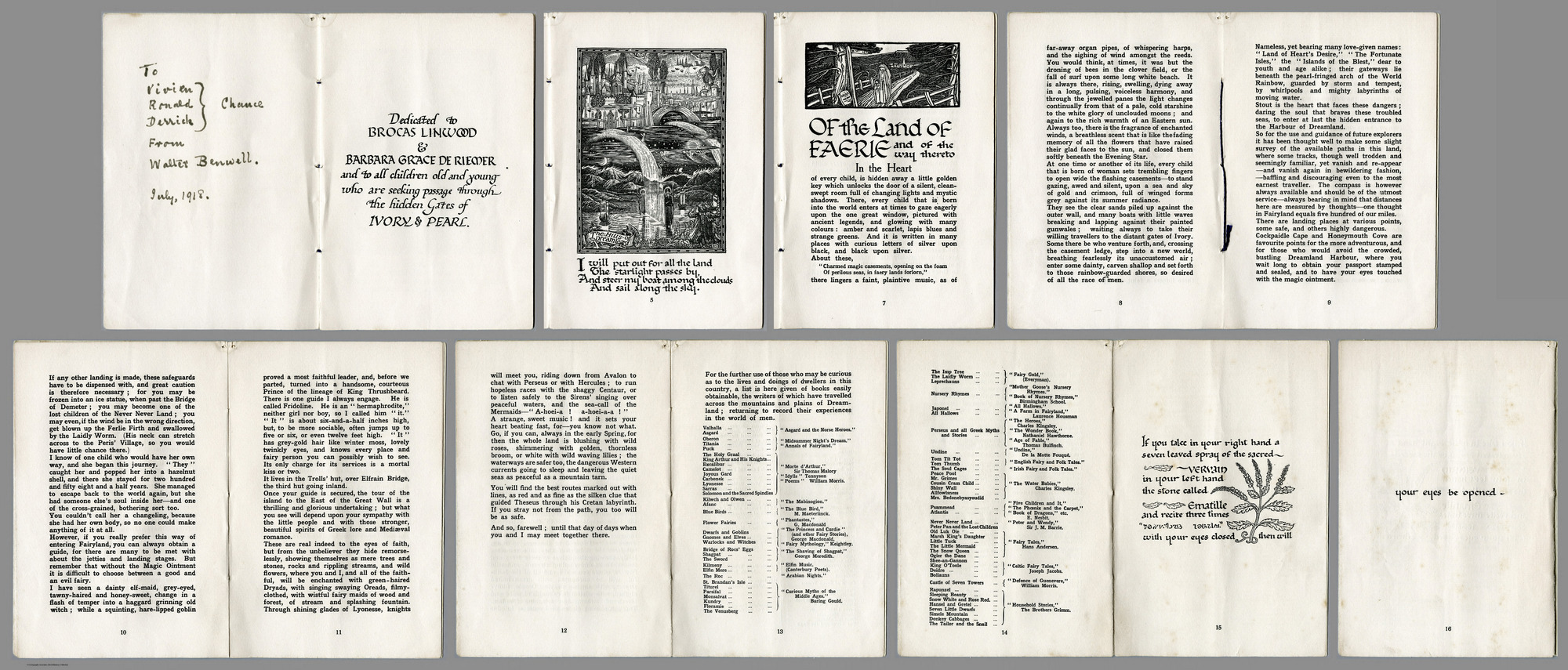
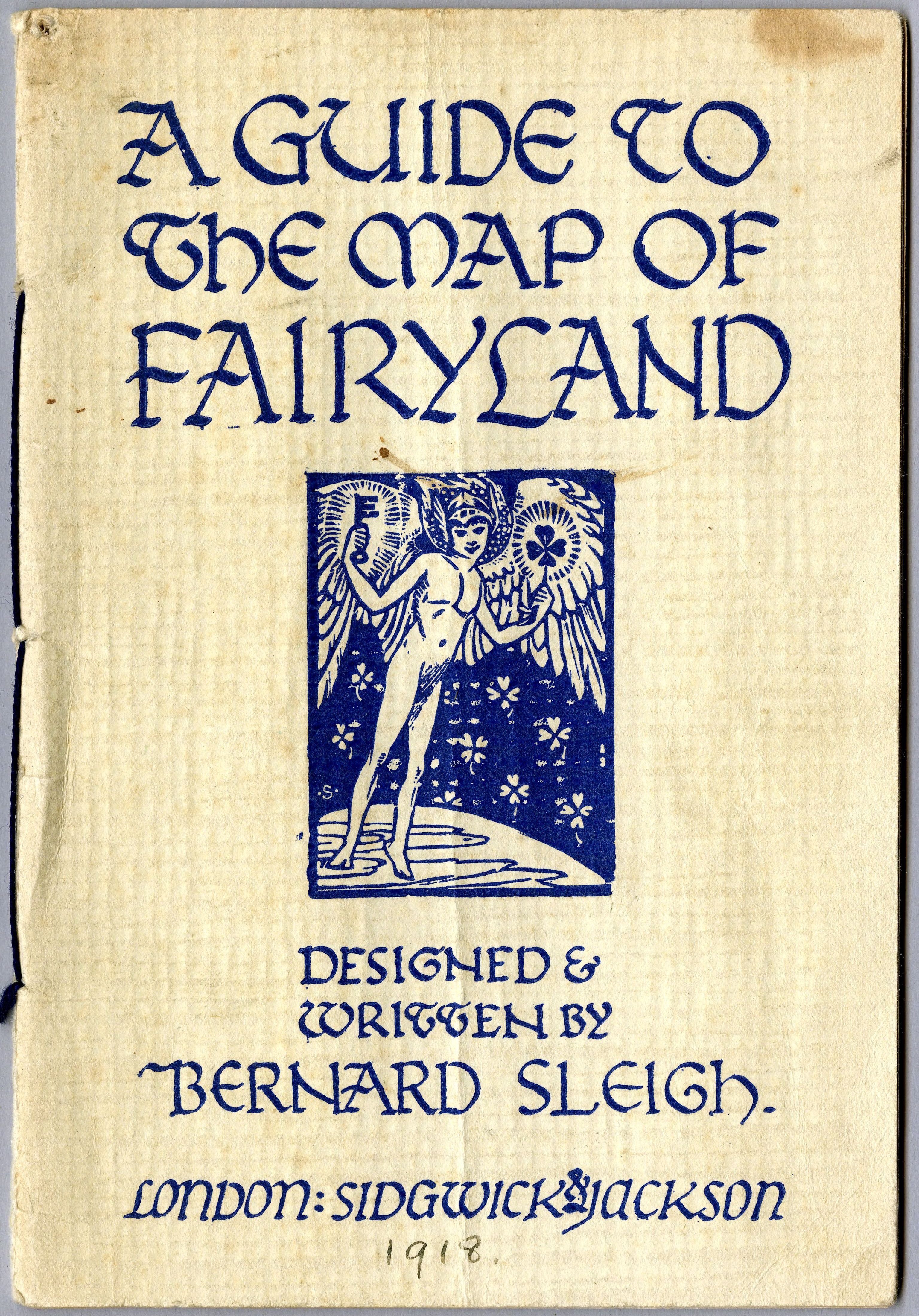
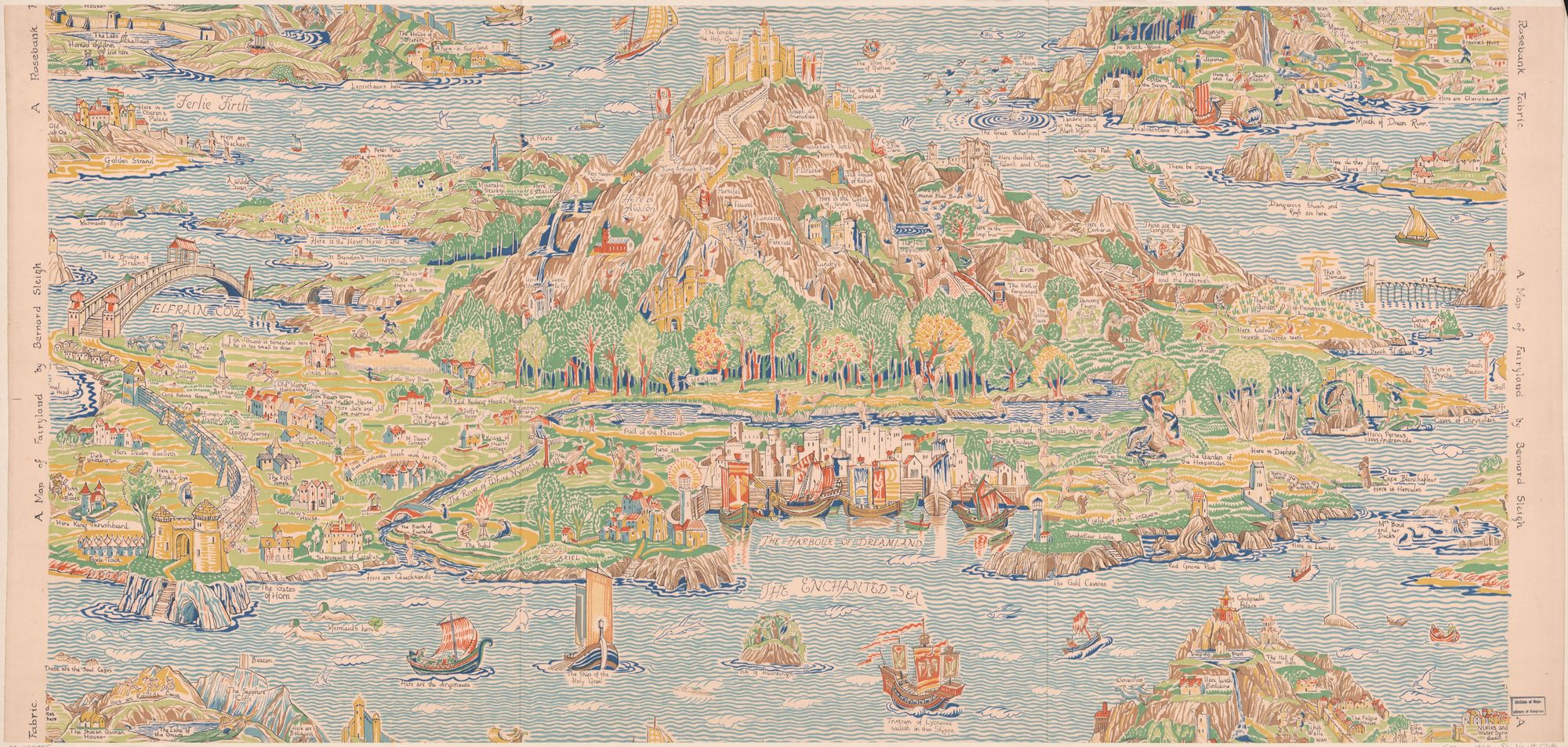
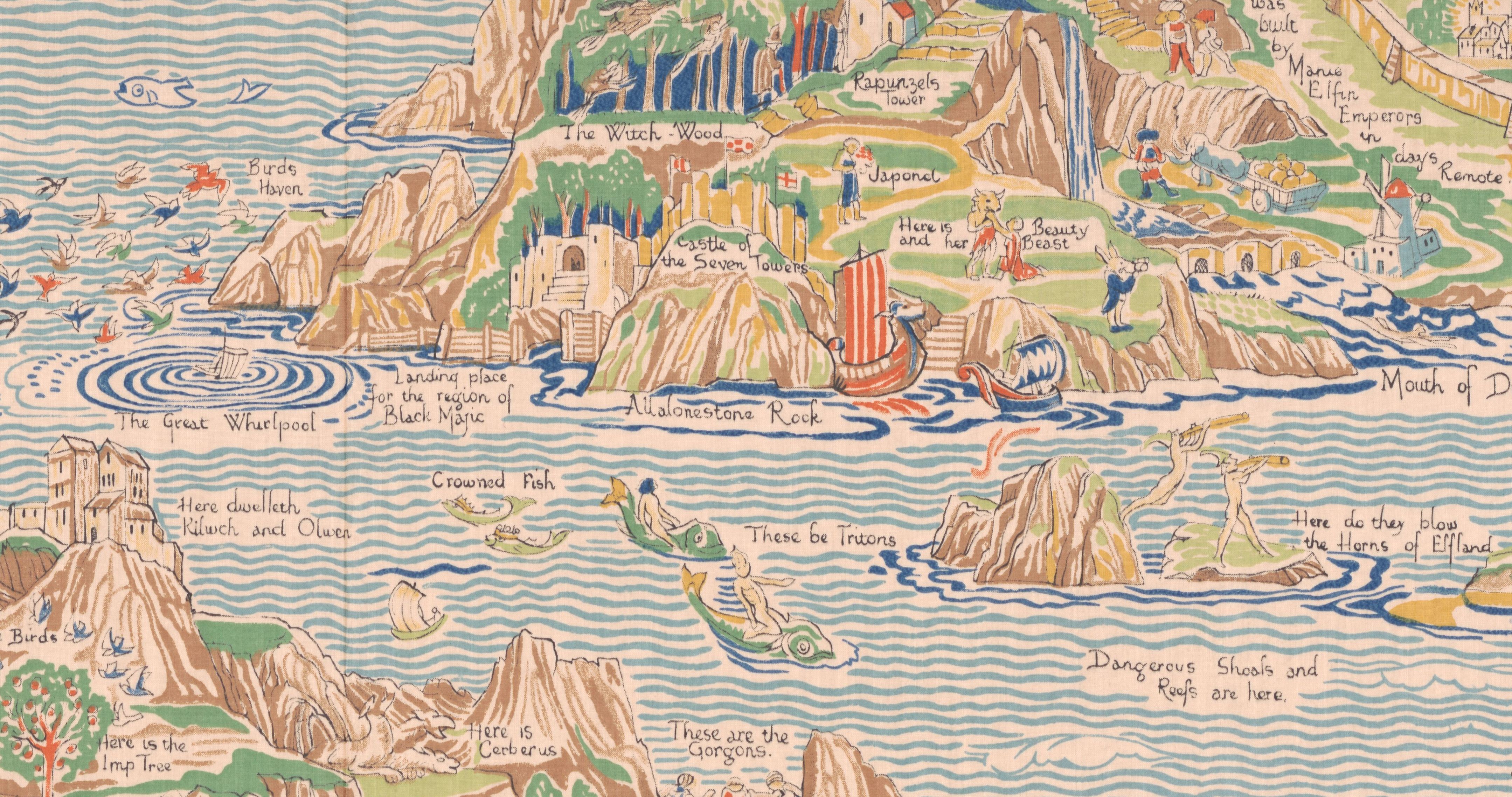





Комментарии
Добавить комментарий